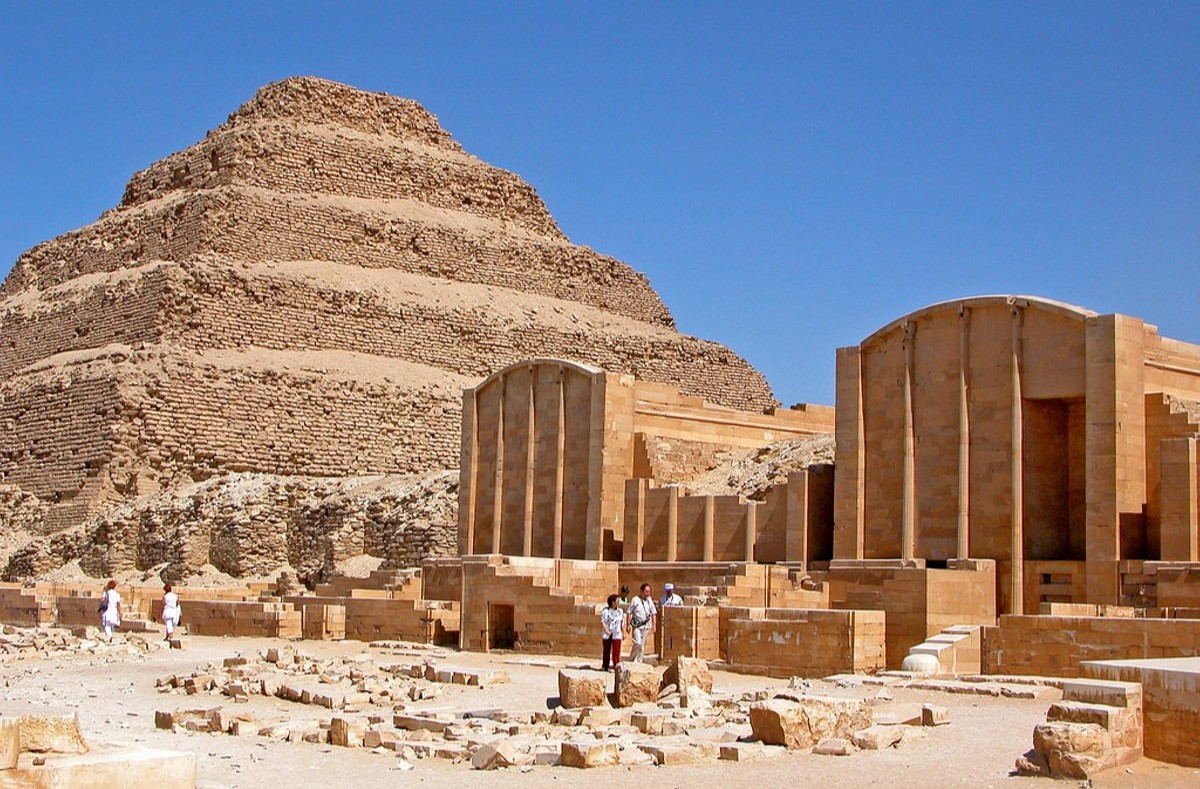
Ever wondered about the Pyramid of Djoser? This ancient marvel, also known as the Step Pyramid, stands proudly in Saqqara, Egypt. Built during the 27th century BCE for Pharaoh Djoser by his architect Imhotep, it’s the world’s oldest stone structure. Unlike the smooth-sided pyramids of Giza, this one has six distinct steps. Imagine the ingenuity required to construct such a monument without modern tools! The pyramid originally stood 62 meters tall and was part of a vast mortuary complex. It’s not just a tomb but a testament to early architectural brilliance. Ready to dive into more intriguing facts?
Key Takeaways:
- The Pyramid of Djoser, built over 4,000 years ago, is the world's oldest stone structure and a UNESCO World Heritage Site. It influenced later pyramid designs and continues to reveal new secrets through ongoing research.
- Designed by the polymath Imhotep, the Step Pyramid of Djoser introduced architectural innovations and symbolized the ancient Egyptians' beliefs in the afterlife. It stands as a testament to ancient Egyptian ingenuity and cultural significance.
The Pyramid of Djoser: An Ancient Marvel
The Pyramid of Djoser stands as a testament to ancient Egyptian ingenuity. This iconic structure, located in Saqqara, Egypt, has fascinated historians, archaeologists, and tourists for centuries. Let's dive into some intriguing facts about this ancient marvel.
-
The Pyramid of Djoser is considered the world's oldest stone structure, dating back to around 2670 BCE.
-
It was built for Pharaoh Djoser, the second king of Egypt's Third Dynasty.
-
The pyramid was designed by Imhotep, a polymath who served as Djoser's vizier.
-
Unlike the smooth-sided pyramids of Giza, Djoser's pyramid is a step pyramid, consisting of six mastabas stacked on top of each other.
-
The pyramid originally stood about 62 meters (203 feet) tall.
-
It was constructed using limestone blocks, a departure from the mudbrick used in earlier tombs.
-
The pyramid complex covers an area of 15 hectares (37 acres).
-
Surrounding the pyramid is a massive limestone wall, standing 10.5 meters (34 feet) high.
-
The wall has 14 doors, but only one is functional; the others are false doors meant to confuse tomb robbers.
-
The entrance to the pyramid complex is through a colonnaded corridor, lined with 40 columns.
Architectural Innovations and Mysteries
The Pyramid of Djoser introduced several architectural innovations that influenced later pyramid designs. Here are some fascinating details about its construction and mysteries.
-
Imhotep's design marked the first use of columns in Egyptian architecture.
-
The pyramid's underground chambers are extensive, with a labyrinth of tunnels and galleries.
-
The burial chamber is located 28 meters (92 feet) below ground level.
-
The chamber was originally lined with granite, a material reserved for royal tombs.
-
The pyramid complex includes a mortuary temple, where rituals for the deceased king were performed.
-
There are 11 shafts around the pyramid, each leading to underground galleries.
-
The pyramid's Step Pyramid design symbolizes a staircase to the heavens, allowing the pharaoh's soul to ascend to the afterlife.
-
The complex also features a Heb-sed court, where Djoser would have celebrated his jubilee festival.
-
The pyramid was once covered in smooth white Tura limestone, which has since eroded.
-
Some of the underground chambers are decorated with blue faience tiles, imitating reed mats.
Cultural and Historical Significance
The Pyramid of Djoser holds immense cultural and historical significance. It provides insights into ancient Egyptian beliefs, practices, and advancements.
-
The pyramid complex is part of the larger Saqqara necropolis, a burial ground for Memphis, the ancient capital of Egypt.
-
It represents a significant shift from the earlier practice of building mastaba tombs to constructing pyramids.
-
The pyramid's construction marked the beginning of the Old Kingdom's pyramid-building era.
-
Djoser's reign is considered a period of great innovation and prosperity in ancient Egypt.
-
The pyramid complex includes several dummy buildings, which were never intended for actual use but symbolized the king's eternal reign.
-
The Step Pyramid influenced the design of later pyramids, including the famous pyramids at Giza.
-
The complex's layout reflects the ancient Egyptians' belief in the afterlife and the importance of funerary rituals.
-
The pyramid has been the subject of numerous archaeological studies, revealing much about ancient Egyptian engineering and construction techniques.
-
The Pyramid of Djoser is a UNESCO World Heritage Site, recognized for its historical and cultural significance.
-
The pyramid complex has undergone several restoration projects to preserve its structure and historical integrity.
Modern Discoveries and Ongoing Research
Despite being over 4,000 years old, the Pyramid of Djoser continues to reveal new secrets. Modern technology and ongoing research have provided fresh insights into this ancient wonder.
-
In 1924, British archaeologist Cecil Firth began the first modern excavation of the pyramid complex.
-
Recent restoration efforts have focused on stabilizing the pyramid's structure and preventing further erosion.
-
Advanced imaging techniques have been used to map the pyramid's underground chambers and tunnels.
-
Archaeologists have discovered numerous artifacts within the complex, including pottery, tools, and statues.
-
The pyramid remains a popular tourist destination, attracting visitors from around the world who marvel at its ancient grandeur.
Timeless Wonder of Ancient Egypt
The Pyramid of Djoser stands as a testament to ancient Egyptian ingenuity and architectural prowess. Built over 4,600 years ago, this step pyramid not only marked a significant evolution in pyramid construction but also laid the groundwork for future monumental structures. Its design, attributed to the brilliant architect Imhotep, showcases early advancements in stone construction techniques. The pyramid's complex, including courtyards, temples, and shrines, reflects the rich cultural and religious beliefs of the time. Despite centuries of wear and natural disasters, the Pyramid of Djoser remains a symbol of human achievement and resilience. Visiting this ancient marvel offers a glimpse into the past, reminding us of the incredible feats our ancestors accomplished. Whether you're a history buff or just curious, the Pyramid of Djoser is a must-see, embodying the timeless wonder of ancient Egypt.
Frequently Asked Questions
Was this page helpful?
Our commitment to delivering trustworthy and engaging content is at the heart of what we do. Each fact on our site is contributed by real users like you, bringing a wealth of diverse insights and information. To ensure the highest standards of accuracy and reliability, our dedicated editors meticulously review each submission. This process guarantees that the facts we share are not only fascinating but also credible. Trust in our commitment to quality and authenticity as you explore and learn with us.


